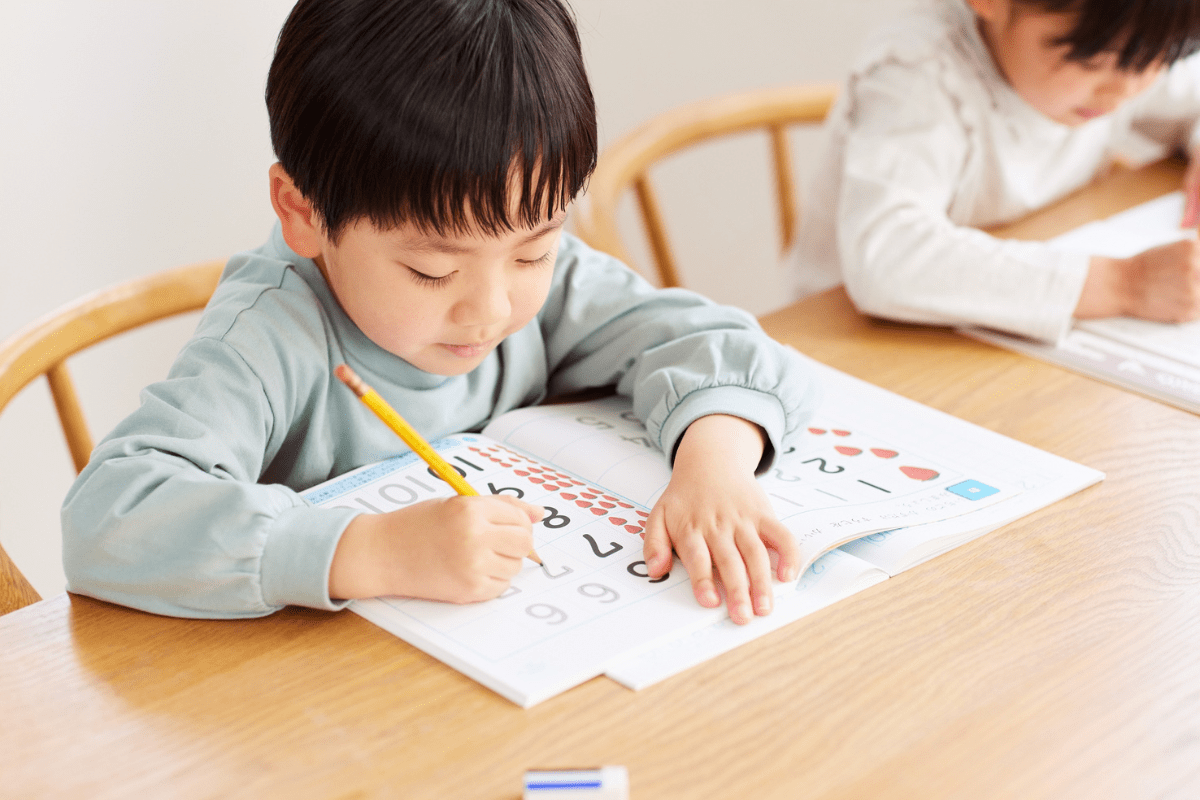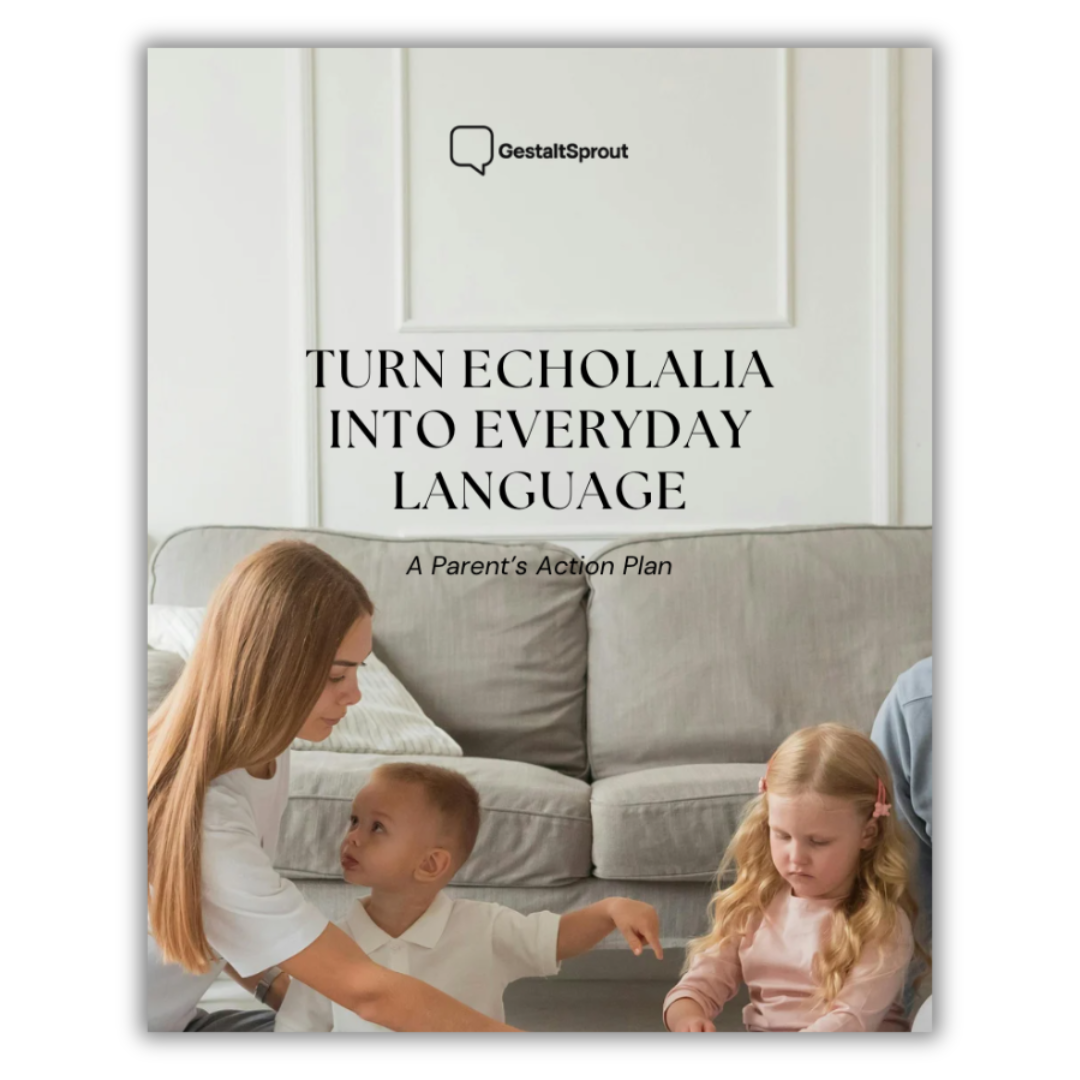Language Acquisition for Gestalt Children: A Practical Guide

Language acquisition for gestalt children can seem puzzling at first. These learners often use scripts and echolalia—memorized chunks of speech—rather than building from single words. Many parents worry this means something is wrong. In reality, this is a natural and valid way to process language. This guide explains what gestalt language processing is, how it unfolds across natural language acquisition (NLA) stages, and simple, evidence-based ways caregivers and clinicians can support children.
You will learn how to recognize echolalia versus intentional communication, apply modeling strategies, track milestones, and know when to seek speech therapy. Advice here draws on clinical frameworks used by speech-language pathologists (SLPs) and researchers, ensuring that strategies are respectful, supportive, and effective. Read on for practical steps to help children move from scripted phrases to flexible speech—without pressure or confusion, and while protecting the child’s voice.
Whether you are a parent, teacher, or clinician, this guide offers tools to encourage growth, build confidence, and celebrate meaningful communication.
What Gestalt Language Acquisition Is — Definitions, Echolalia & Stages
How it differs from analytic learning
Gestalt learners store and use multiword phrases before breaking them into smaller units. Understanding language acquisition for gestalt children helps caregivers and clinicians see progress that looks different from typical development.
Analytic versus gestalt processing
- Analytic learners: pick up single words, then combine them.
- Gestalt learners: memorize phrases, later analyze them into parts.
For more, see KidTherapy and Sol Speech.
Echolalia and scripting explained
- Echolalia: repeating words or phrases, either immediately or after a delay. Both types can serve real communication purposes. (Sources: KidTherapy, SLPNow)
- Scripting: delayed echolalia, often from media or routines. Scripts may be playful or functional—and can become powerful learning material.
Natural Language Acquisition stages (NLA) Adapted from Marge Blanc and SLPNow:
- Stage 1: Echolalia, using memorized chunks.
- Stage 2: Mitigated chunks, partial breakdowns.
- Stage 3: Single words and two-word combinations.
- Stage 4: Simple grammar, subject-verb-object structures.
- Stage 5: Complex grammar, varied tenses, WH-questions.
- Stage 6: Flexible, generative language like peers.
Key principle: Echolalia communicates meaning. Instead of suppressing it, respond and expand. This builds trust and helps children progress naturally through the NLA stages.
How Caregivers & Educators Should Respond — Practical Do’s and Don’ts
Gestalt learners communicate intent through scripts. Respectful responses support language acquisition for gestalt children and strengthen connection.
Do’s — supportive strategies
- Always respond: Acknowledge every communication attempt. Validation builds trust (KidTherapy).
- Be a detective: Observe when scripts appear and what they might mean.
- Use simple, clear language: Pair words with visuals or gestures (Sol Speech).
- Model, don’t correct: Naturally expand phrases instead of forcing replacements.
- Embed language in play: Follow the child’s interests for high-value teaching moments.
- Collaborate with teachers: Use consistent routines and models (SLPNow).
Don’ts — avoid these pitfalls
- Don’t take scripts literally—they often signal feelings or intent.
- Don’t pressure for single words too soon. Correction can shut down attempts.
- Don’t ignore communication attempts.
Quick example:
Child says: “Let’s go outside.”
- Response: “Yes—let’s go outside!”
- Expansion: “Do you want the ball or the bike?”
Speech-Language Therapy & NLA-Aligned Intervention
The framework
NLA values spontaneous uptake of meaningful chunks. Therapy builds on these chunks rather than replacing them with analytic drills.
Stage-specific supports
- Stage 1: Validate echolalia.
- Stage 2: Offer small variations.
- Stage 3: Reinforce single words and expand naturally.
- Stages 4–6: Introduce grammar gradually in meaningful contexts.
Effective techniques
- Child-led play with language modeling.
- Expansion, not correction.
- Collaboration across home, school, and therapy.
Clinical pacing
Progress is gradual. Mitigations and reformulations are signs of growth. Celebrate small shifts.
Example progression:
- Scripted: “Let’s go outside.”
- Mitigated: “Let’s go.”
- Word: “Go.”
- Self-generated: “I want to go outside.”
Final Takeaway
Understanding language acquisition for gestalt children reframes how we listen, respond, and teach. Gestalt learners progress from stored scripts to flexible language through validation, modeling, and natural opportunities.
Practical steps to try this week:
- Notice a script.
- Respond respectfully.
- Model a slightly expanded phrase.
Over time, these small, consistent strategies support meaningful growth. Share your experiences and questions—progress is a journey, and every attempt at communication deserves celebration.
